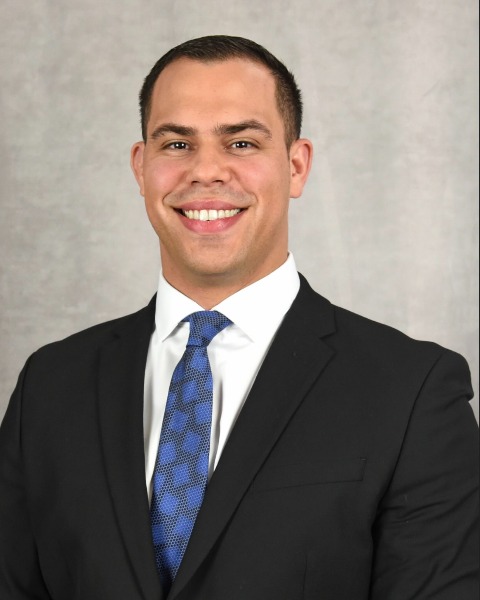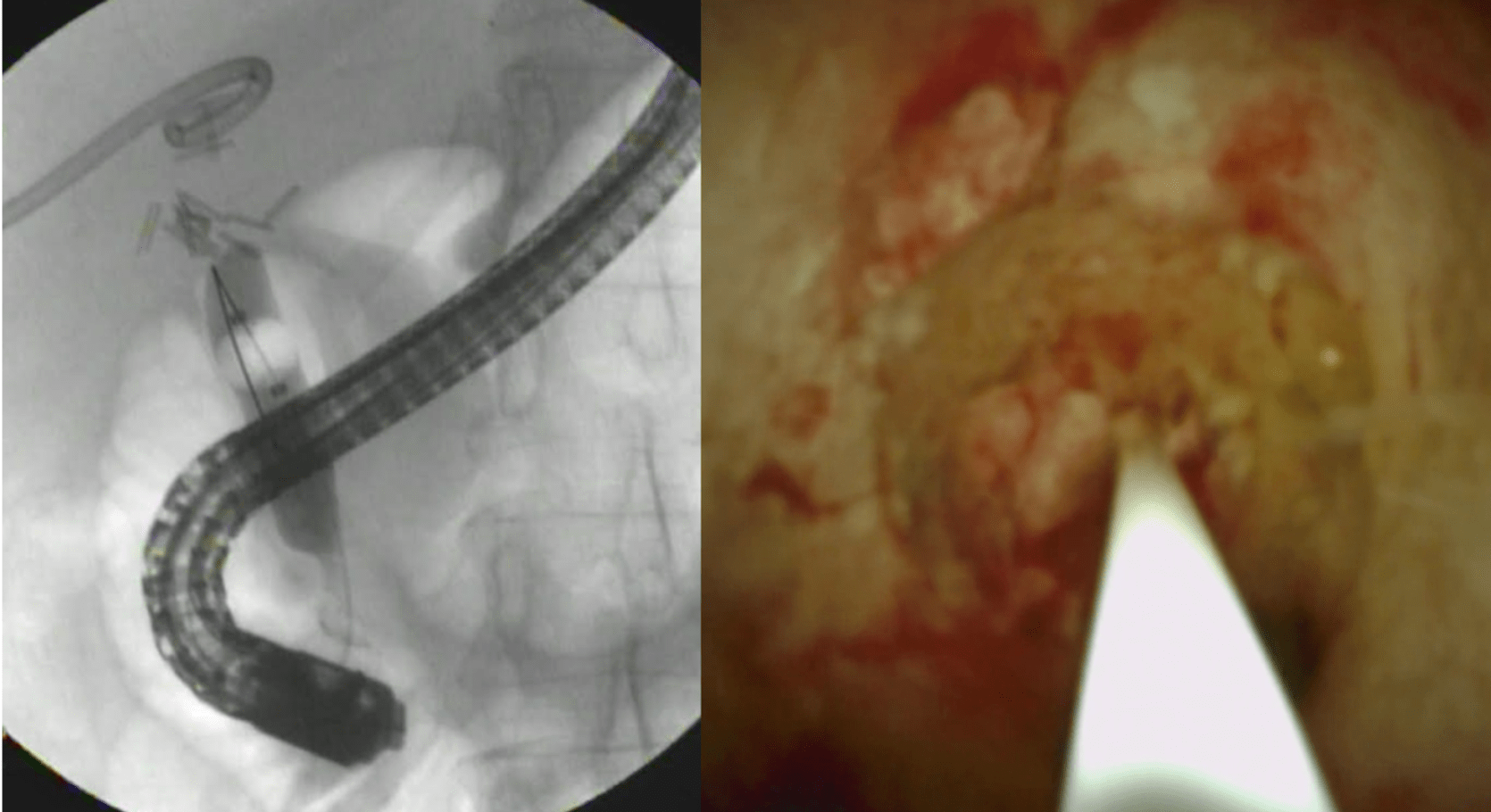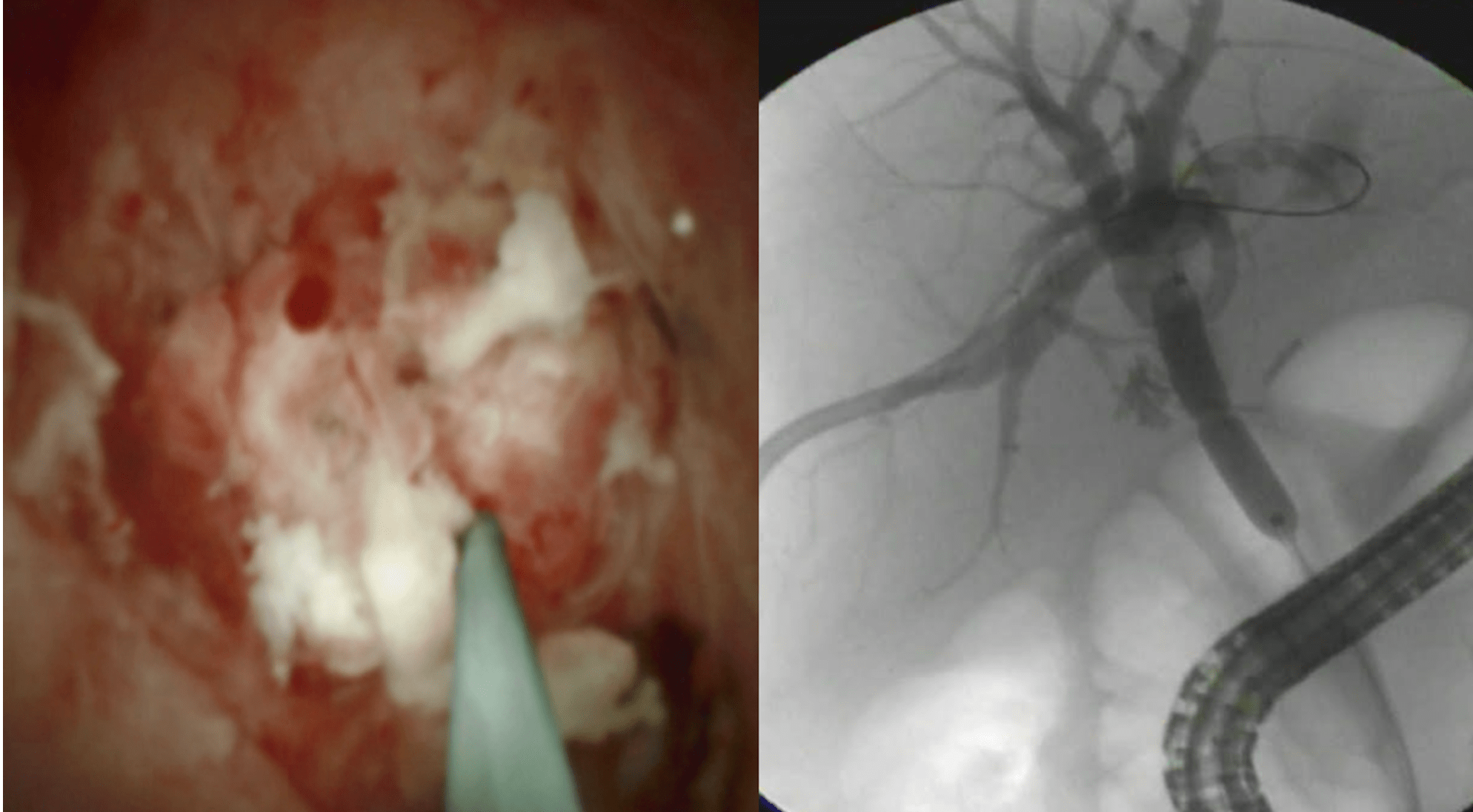Tuesday Poster Session
Category: Biliary/Pancreas
P4438 - Novel Use of Electrohydraulic Lithotripsy Catheter for Endoscopic Reconnection of a Completely Transected Proximal Common Hepatic Duct
Tuesday, October 28, 2025
10:30 AM - 4:00 PM PDT
Location: Exhibit Hall

Michael Reymundi, DO (he/him/his)
Lewis Gale Medical Center, VA
Presenting Author(s)
Award: ACG Presidential Poster Award
Michael Reymundi, DO1, Jonh J.. Pineda Bonilla, MD2
1Lewis Gale Medical Center, Salem, VA; 2LewisGale Medical Center, HCA, Salem, VA
Introduction: Bile duct injury is a known complication of cholecystectomy, occurring in approximately 0.3–0.7% of cases. High-grade biliary strictures can lead to ascending cholangitis, reduced quality of life, and decreased overall survival. We present a case utilizing electrohydraulic lithotripsy (EHL) as a novel method to restore continuity in a completely transected biliary system (Stewart-Way Class IV).
Case Description/
Methods: A 54-year-old woman presented with obstructive jaundice several years after a complicated cholecystectomy. Imaging revealed complete obstruction of the common hepatic duct (CHD) within 2 cm of the bifurcation, consistent with a Strasberg type E2 injury. After a failed ERCP, a 10Fr percutaneous catheter was placed. During a follow-up ERCP, contrast was injected through the percutaneous catheter to opacify the intrahepatic biliary system. Using direct cholangioscopic visualization, the EHL catheter was employed in a freehand technique to carefully traverse the stricture and enter the opacified proximal CHD. This created a fistulous tract that enabled retrograde wire passage. The tract was dilated, and a fully covered metal stent was placed. At follow-up ERCP three months later, the stent was removed, and the stricture had remodeled.
Discussion: Endoscopic management of benign high-grade proximal biliary strictures depends on the ability to traverse the stricture with a guidewire. When the wire cannot be passed, surgical intervention is typically required. The major limitation in these cases is safe access through the disconnected bile duct. This case highlights the successful use of EHL to precisely create a tract through the stricture under direct visualization. The puncture was controlled—small enough to minimize risk, yet sufficient to permit contrast injection, wire passage, tract dilation, and stent placement.
EHL is traditionally used for fragmentation of difficult biliary and pancreatic stones. To our knowledge, this is the first reported case of EHL being used to re-establish continuity in a completely transected biliary system. This approach offers a promising, minimally invasive alternative to surgery in the treatment of post-cholecystectomy biliary disconnections.

Figure: Cholangiogram with complete obstruction- cholangioscopy with EHL

Figure: Cholangioscopy with wire passage and cholangiogram with balloon dilation
Disclosures:
Michael Reymundi indicated no relevant financial relationships.
Jonh Pineda Bonilla: Boston Scientific of America – Consultant.
Michael Reymundi, DO1, Jonh J.. Pineda Bonilla, MD2. P4438 - Novel Use of Electrohydraulic Lithotripsy Catheter for Endoscopic Reconnection of a Completely Transected Proximal Common Hepatic Duct, ACG 2025 Annual Scientific Meeting Abstracts. Phoenix, AZ: American College of Gastroenterology.
Michael Reymundi, DO1, Jonh J.. Pineda Bonilla, MD2
1Lewis Gale Medical Center, Salem, VA; 2LewisGale Medical Center, HCA, Salem, VA
Introduction: Bile duct injury is a known complication of cholecystectomy, occurring in approximately 0.3–0.7% of cases. High-grade biliary strictures can lead to ascending cholangitis, reduced quality of life, and decreased overall survival. We present a case utilizing electrohydraulic lithotripsy (EHL) as a novel method to restore continuity in a completely transected biliary system (Stewart-Way Class IV).
Case Description/
Methods: A 54-year-old woman presented with obstructive jaundice several years after a complicated cholecystectomy. Imaging revealed complete obstruction of the common hepatic duct (CHD) within 2 cm of the bifurcation, consistent with a Strasberg type E2 injury. After a failed ERCP, a 10Fr percutaneous catheter was placed. During a follow-up ERCP, contrast was injected through the percutaneous catheter to opacify the intrahepatic biliary system. Using direct cholangioscopic visualization, the EHL catheter was employed in a freehand technique to carefully traverse the stricture and enter the opacified proximal CHD. This created a fistulous tract that enabled retrograde wire passage. The tract was dilated, and a fully covered metal stent was placed. At follow-up ERCP three months later, the stent was removed, and the stricture had remodeled.
Discussion: Endoscopic management of benign high-grade proximal biliary strictures depends on the ability to traverse the stricture with a guidewire. When the wire cannot be passed, surgical intervention is typically required. The major limitation in these cases is safe access through the disconnected bile duct. This case highlights the successful use of EHL to precisely create a tract through the stricture under direct visualization. The puncture was controlled—small enough to minimize risk, yet sufficient to permit contrast injection, wire passage, tract dilation, and stent placement.
EHL is traditionally used for fragmentation of difficult biliary and pancreatic stones. To our knowledge, this is the first reported case of EHL being used to re-establish continuity in a completely transected biliary system. This approach offers a promising, minimally invasive alternative to surgery in the treatment of post-cholecystectomy biliary disconnections.

Figure: Cholangiogram with complete obstruction- cholangioscopy with EHL

Figure: Cholangioscopy with wire passage and cholangiogram with balloon dilation
Disclosures:
Michael Reymundi indicated no relevant financial relationships.
Jonh Pineda Bonilla: Boston Scientific of America – Consultant.
Michael Reymundi, DO1, Jonh J.. Pineda Bonilla, MD2. P4438 - Novel Use of Electrohydraulic Lithotripsy Catheter for Endoscopic Reconnection of a Completely Transected Proximal Common Hepatic Duct, ACG 2025 Annual Scientific Meeting Abstracts. Phoenix, AZ: American College of Gastroenterology.

